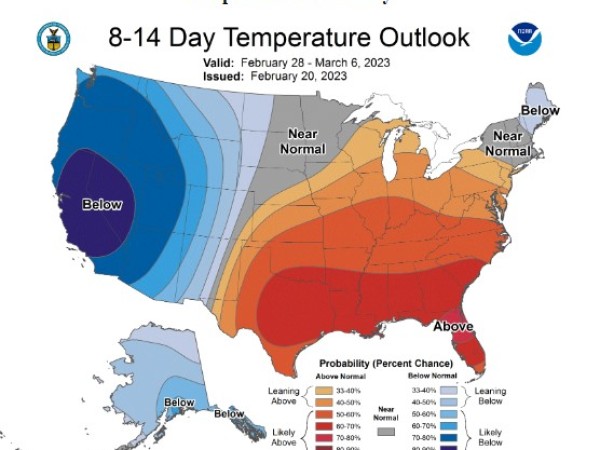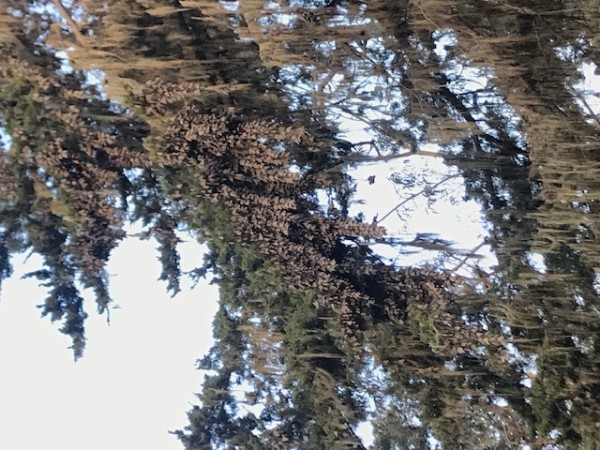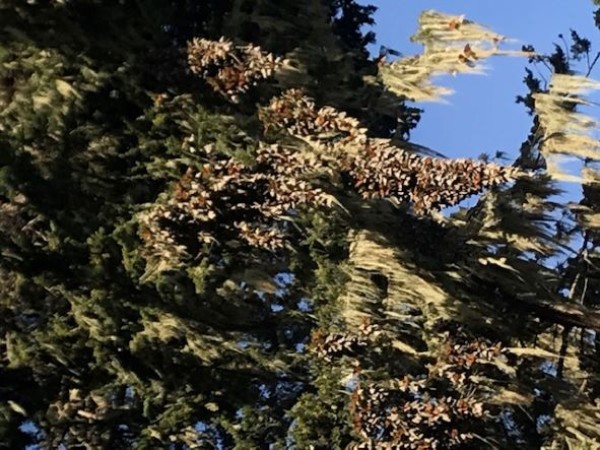Letter From Gail Morris: Western Monarch Spring 2023 Report #2
Western Monarch Spring 2023 Report #2
Western Monarchs Update
Surprisingly in comparison to recent years, many monarchs in the West are still savoring the protection of the California overwintering sites as we approach the end of February, a harbinger of cool weather. Mating and active flying and nectaring monarchs rule the day in the groves on sunny days. Counts continue to monitor their presence/absence. Despite the cooler temperatures, early milkweeds are appearing to greet females beginning their spring migration. Where are the monarchs? Be sure to watch the Journey North's first-monarch-sightings map. Please report so that these maps reflect truly what is happening on the ground.
News from the California Overwintering Sites
“They are still here” – monitoring monarch movement in the West.
Pacific Grove
Stephanie Turcotte reports from the Monarch Sanctuary in Pacific Grove:
“It has been two weeks since we counted in Pacific Grove, CA with all kinds of erratic weather in between….strong winds, rain and very cold morning temps, even freezing temperatures inland from us. I hadn’t seen much monarch flight outside the grove until yesterday afternoon [February 16.]
“This morning the temperature in the PG habitat, at the beginning of the count, was 38 degrees! The monarchs are concentrated in 3 Cypress trees, all located in the north and north eastern area of the grove. The highest number (4,475) are east facing on the NE side, positioned to get the sun first. The other high count (3,123), interestingly enough, are deeper in the interior and are in the coldest part of the grove, low down, and will get the sun last! Interesting to note, there were no monarchs flying and no monarchs grounded, which hasn’t been the case for the majority of the previous counts. Flight did begin by 8:30am when we finished counting. The total count in Pacific Grove this morning was 8,336! Last year, our count was 2,804 on 2/18/22; however, we had very warm temperatures the week prior. We will count again next Saturday, 2/25/23. Things might shift by then.”
Be sure to see Stephanie’s photos!
Lighthouse Field, Santa Cruz
Diana Magor reports the monarch status in the Santa Cruz area. “My most recent count at LF [Lighthouse Field] was 848. I found only a handful of females. All the remaining ones seem to be males. This is normal for this time of year, but I have only seen 2 monarchs in my garden in the last few weeks, and I’m concerned that if the females have begun their migration East and North, they may have found only cold temps inland and no milkweeds. However, in a photograph taken recently at Pacific Grove, 30% of the sunning monarchs were females.
“State Parks planted 5 new cypress trees on the windward side of Lighthouse Field at my request to plug a gap in the S wind barrier! This should greatly improve the Lighthouse Field overwintering site!
“Our milkweed team has found California milkweed emerging at Mt. Diablo East of San Fransisco at about 1, 900’ as well as Heartleaf Milkweed emerging on Jan 21 South of Lake Berryessa in the North Bay and yesterday Feb 17 at Carquinez Strait Shoreline East of SF, so any females that make it will find a few milkweeds on which to oviposit.
“Our test heartleaf milkweeds have begun to emerge after dormancy too, so we’re hoping that native plant and maybe other nurseries will be able to follow our protocol and grow them commercially and for habitat restoration!”
The “Weather Effect”
Why is monarch behavior changing in California this year? Many people look to the effect of weather on monarchs. This winter has been colder than recent years in California and portions of the west. The NOAA map of temperatures from a global perspective reveals this was “the 7th warmest January in the 174 year record” according to Austin Jamison of NOAA. “But, closer to home, you can see below normal for the Southwest which probably fits with what you've been feeling!”
Be sure to check where you live on the NOAA Climate-At-A-Glance map.
Cold temperatures will return to the region this week. NOAA has a number of predictive weather maps. Keep an eye out and let’s see what the monarchs do.
Thank You!
A special Thank You to Stephanie Turcotte and Diana Magor for their reports and photos.
Send in your reports!
Please report your sightings of emerging milkweeds and monarchs in any life-stage! Report to Journey North—Provide as much information as you can such as weather conditions (it’s okay to estimate). Your detailed description of what you see can include, but is not limited to, the monarch’s gender and activity and, if known, the type of milkweed, flowers if they are nectaring. Let us know how monarchs are faring under stressors from winter storms still sweeping through!
Gail Morris is the Coordinator of the Southwest Monarch Study (www.swmonarchs.org), a Monarch Watch Conservation Specialist, and the Vice President of the Monarch Butterfly Fund, the Central Arizona Butterfly Association and the Western Monarch Advocates. The Western Monarch Population News is based on comments provided to Gail Morris. We hope to increase the number of sightings and therefore photos and comments entered into the Journey North. We rely on the volunteers who communicate regularly with Gail and who agree to participate in our effort to increase awareness of the population of western Monarchs. You can reach her at gail@swmonarchs.org
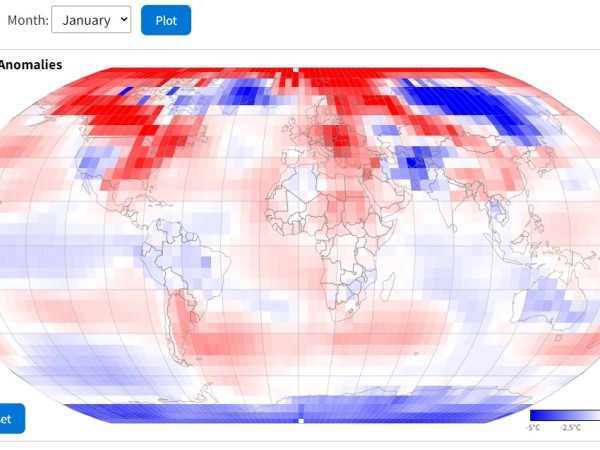
January 2023 Snapshot. NOAA Climate-At-A-Glance: Global Mapping
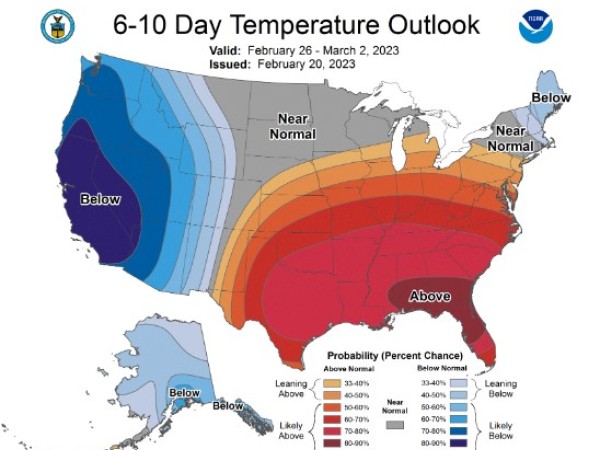
Climate Prediction Center: February 23 to 27
